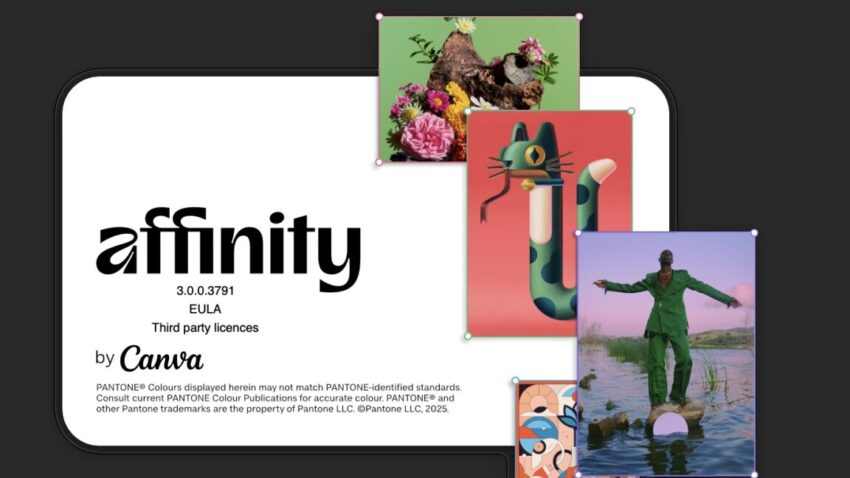
affinity s image-editing apps go freemium in Canva has unveiled a significant update to the Affinity image-editing and publishing apps, transitioning them to a freemium model that integrates generative AI features behind a subscription paywall.
affinity s image-editing apps go freemium in
Background on Canva’s Acquisition of Affinity
In early 2024, Canva, a prominent graphic design platform, acquired the Affinity suite of image-editing applications, which includes Affinity Photo, Affinity Designer, and Affinity Publisher. This acquisition raised several questions regarding the future of Affinity’s products and how they would align with Canva’s business model. Historically, Affinity has been known for its one-time purchase model, allowing users to buy software outright without the ongoing costs associated with subscription services like Adobe Creative Cloud. This approach has attracted a loyal user base that values ownership and predictability in software expenses.
Canva, on the other hand, has built its success on a subscription-based model that offers various tiers of service, including a free version with limited features and paid plans that unlock additional capabilities. The integration of Affinity’s products into this model posed challenges, particularly regarding the user experience and the philosophical differences between the two companies, especially concerning generative AI technologies.
The New Affinity by Canva App
This week, Canva addressed these concerns by launching a new unified application called “Affinity by Canva.” This app consolidates the functionalities of the three individual Affinity apps into a single platform, which is free to use for anyone with a Canva user account. This decision aims to streamline the user experience and provide a more cohesive environment for graphic design.
Core Features Available for Free
One of the most significant aspects of the new Affinity by Canva app is that it retains the core features of the original Affinity applications, making them available for free. Users can access essential tools for photo editing, vector design, and publishing without any upfront costs. This move is likely to be well-received by existing Affinity users who appreciated the software’s robust capabilities without the burden of a subscription fee.
- Affinity Photo: Users can perform advanced photo editing tasks, including retouching, compositing, and color correction.
- Affinity Designer: This tool allows for vector graphic design, enabling users to create illustrations, logos, and other scalable graphics.
- Affinity Publisher: Users can design layouts for print and digital media, making it ideal for creating brochures, magazines, and more.
By keeping these core functionalities free, Canva aims to attract a broader audience and encourage users to explore the capabilities of the Affinity suite without financial commitment. This strategy could potentially lead to increased user engagement and loyalty, as users may be more inclined to invest in additional features once they become familiar with the software.
Generative AI Features and Subscription Model
While the core features are free, Canva has decided to lock generative AI capabilities behind its existing subscription plans. Users who wish to access these advanced features will need to subscribe to one of Canva’s paid tiers, which starts at $120 per year for individual users. This approach aligns with Canva’s broader strategy of monetizing AI technologies, which have become increasingly popular in the design space.
Generative AI features can include tools that assist in creating graphics, automating repetitive tasks, and enhancing design workflows. For instance, users might benefit from AI-driven suggestions for layouts, color schemes, or even content generation. However, the decision to restrict these features to paid subscribers may raise concerns among users who prefer the traditional one-time purchase model that Affinity has championed.
Implications for Existing Users
The transition to a freemium model may have mixed implications for existing Affinity users. On one hand, the availability of core features for free is a positive development, particularly for those who have been loyal to Affinity’s products. Users can continue to utilize the software without the pressure of ongoing subscription fees, which is a significant advantage over competitors like Adobe.
On the other hand, the introduction of a subscription model for generative AI features may alienate some users who are wary of the potential for escalating costs. The concern lies in how Canva will define the boundary between free and premium features in the future. Users who appreciate the predictability of a one-time purchase model may find it challenging to adapt to a system where features can be gated behind a paywall.
Stakeholder Reactions
The response from stakeholders, including users and industry experts, has been varied. Many existing Affinity users have expressed cautious optimism about the new unified app. They appreciate the retention of core functionalities without a subscription fee, but they are also apprehensive about the implications of the freemium model.
Some users have voiced concerns on social media platforms and forums, questioning how Canva will manage the balance between free and premium features. There is a fear that essential tools may eventually be locked behind a paywall, limiting access for users who do not wish to subscribe. Others have pointed out that while the core features are currently free, there is no guarantee that this will remain the case indefinitely.
Industry analysts have noted that Canva’s move to integrate Affinity’s products into its ecosystem is indicative of a broader trend in the software industry, where companies are increasingly adopting freemium models to drive user engagement and revenue. This shift reflects changing consumer preferences, particularly among younger users who are more accustomed to subscription services.
Future Outlook
Looking ahead, the future of Affinity by Canva will likely depend on how well Canva manages user expectations and balances the freemium model with the needs of its user base. The company will need to communicate transparently about which features will remain free and which will require a subscription. Additionally, Canva must ensure that the quality of the free features remains high to retain users who may be hesitant to pay for a subscription.
Moreover, the integration of generative AI features could play a pivotal role in shaping the app’s future. As AI technologies continue to evolve, Canva may introduce new tools that enhance the user experience and streamline design processes. If these tools prove to be valuable, users may be more inclined to subscribe, even if they initially preferred the one-time purchase model.
Conclusion
The launch of Affinity by Canva marks a significant shift in the landscape of graphic design software, particularly for users who have long favored Affinity’s traditional licensing model. While the availability of core features for free is a positive development, the introduction of a subscription model for generative AI capabilities raises questions about the future direction of the software. As Canva navigates this transition, it will be crucial for the company to maintain open lines of communication with its user base and ensure that the value proposition remains strong for both free and paid users.
Source: Original report
Was this helpful?
Last Modified: October 31, 2025 at 1:38 am
3 views















